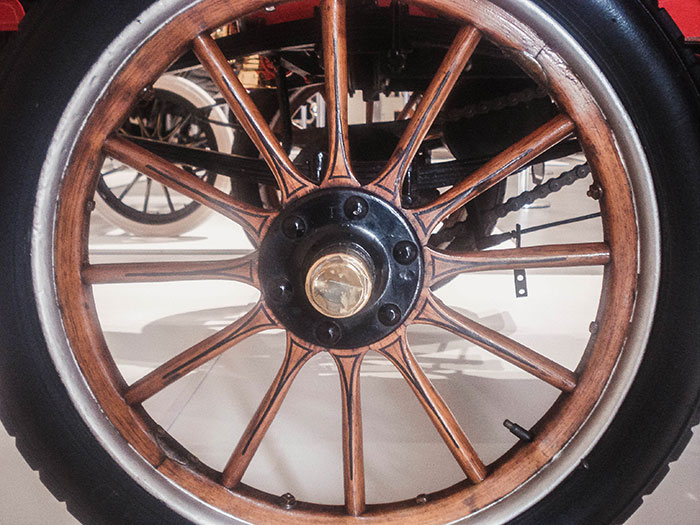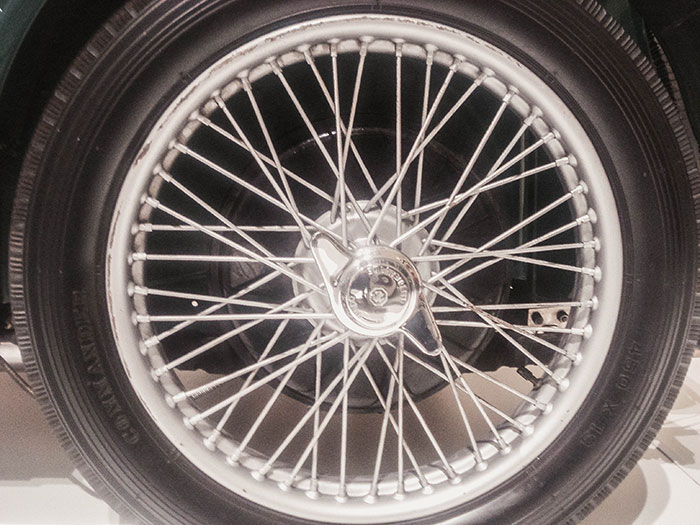
24 Jul Memorabilia: Invention of the wheel
FMM Assistant Curator Cheslynne Ruiters takes a look at the stories behind some of the items in FMM’s collection of artefacts and motoring memorabilia in general. This month he rolls with the invention of the wheel
In a motoring sense, one item that we often take for granted is the road wheel. A road wheel is a circular component that is intended to rotate on an axle bearing, allowing a vehicle to be moved easily while supporting a load. The earliest wheels were made of a solid piece of heavy wood, hard to make round and not wobble. Naturally, the wheel must be round so that it rolls properly and that depends on the wheelwright and the wood that is used, which must be seasoned and have a low moisture content. The earliest wheels had wooden hubs but later metal hubs were used because of strength and the ease of being able to work on replacement if needed.
Spoked wheels became fashionable for horse-drawn carriages and wagons. In a simple wooden wheel, a load on the hub causes the wheel rim to flatten slightly against the ground as the lower-most wooden spoke shortens and compresses.
Wire-spoke wheels came into vogue for bicycles, motorcycles, perambulators, wheelchairs and suchlike. With their excellent weight to strength ratio, they were soon adopted for light cars, especially sports cars right up to the 1960s, and even early aircraft. Many such wheels had the benefit of having removable spokes that can be replaced individually if they break or bend, and proper balancing was often difficult. But as a classic style item, they still have appeal…





